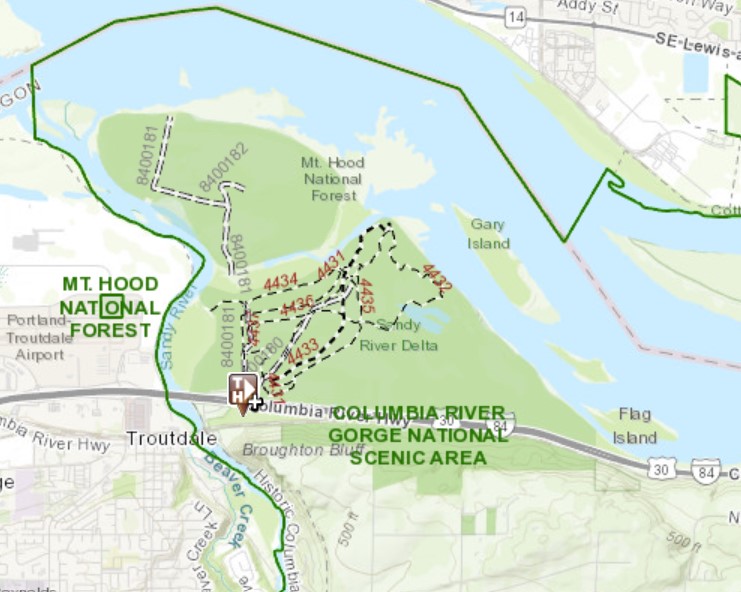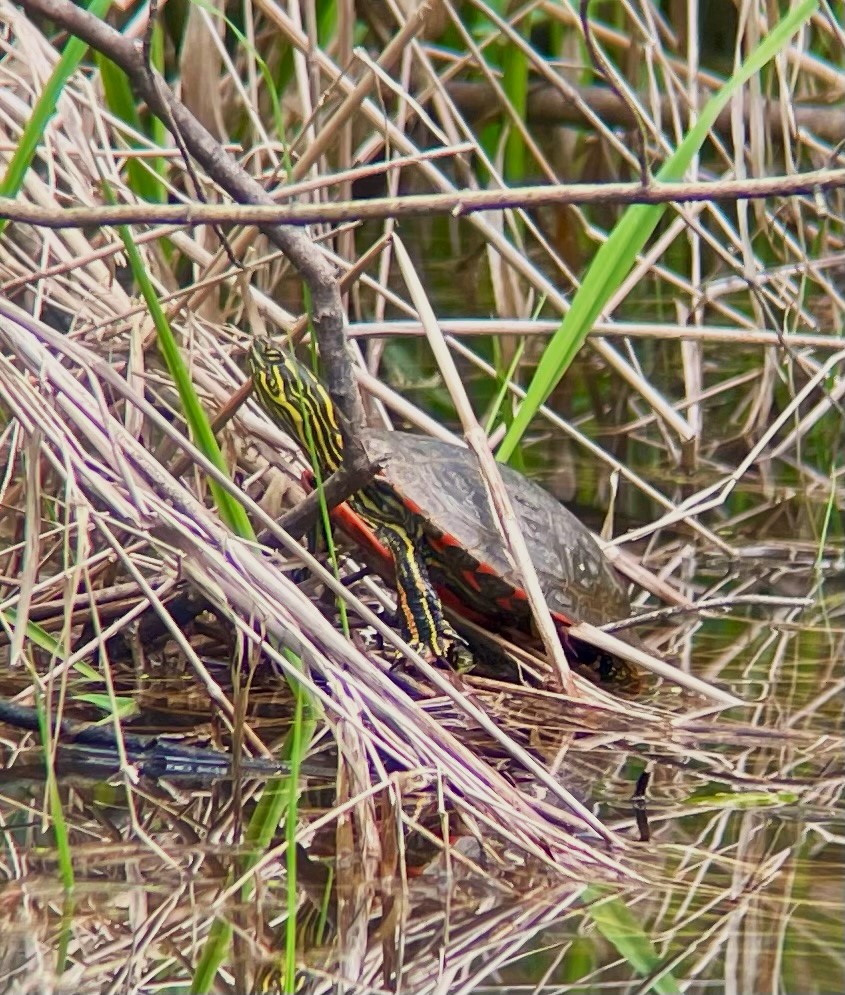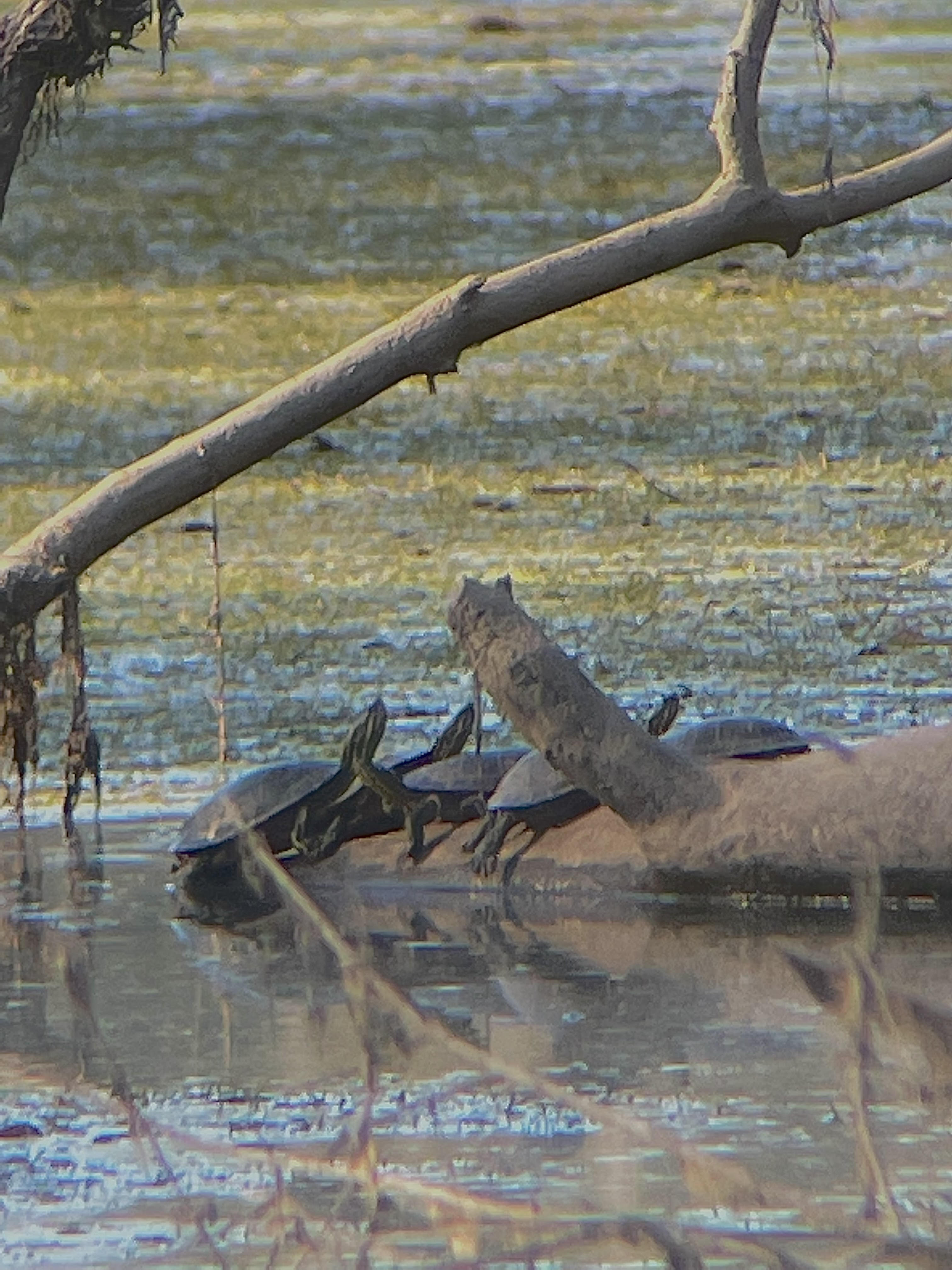Western painted turtle research and habitat restoration underway at the Sandy River Delta – your participation is needed!
Located at the confluence of the Sandy and Columbia rivers, The Sandy River Delta is a popular recreation area for walkers, horseback riders, and birdwatchers. It is also important habitat for the western painted turtle (Chrysemys picta bellii).

Oregon Department of Fish and Wildlife considers the western painted turtle to be a Sensitive-Critical species – meaning that there are significant challenges impacting the turtles’ abundance, distribution, diversity, and/or habitat. habitat loss and degradation, increased nest predation, and the introduction of invasive competitor species such as red-eared sliders are the primary drivers of the western painted turtles’ decline.
When you visit the Sandy River Delta, keep an eye out for the western painted turtle and report any sightings to sandyriverturtles@gmail.com. By reporting your turtle sightings (sandyriverturtles@gmail.com), researchers can better understand the habits and prevalence of the turtles in this area.


Portland State University (PSU), the Lower Columbia Estuary Partnership, and the U.S. Forest Service have teamed up to conduct research on western painted turtles at the Sandy River Delta. The research will help establish a western painted turtle management plan to increase the population of turtles at the site.
The western painted turtle management plan may include habitat improvements such as:
· Placement of downed logs as basking structures - Turtles require basking structures, such as downed logs, to bask in the sunlight. As ectotherms (an animal that is dependent on external sources of body heat), turtles need this sunlight to raise their metabolism, digest food, develop their eggs, and properly develop their shells. Currently, ponds at the Sandy River Delta do not contain sufficient basking habitat.
· Planting of native vegetation surrounding ponds - Adult western painted turtles have few predators but do risk predation by animals such as racoons and coyotes when on land or at the water’s edge. Juvenile turtles face much higher chances of predation by these same predators as well as by herons, otters, and minks. Painted turtles, especially juveniles and hatchlings, benefit from native vegetation to hide from predators when leaving or returning to their aquatic sites. There is currently very little vegetation surrounding the ponds at the Sandy River Delta, leaving turtles exposed when travelling to and from terrestrial areas.
· Removal of invasive Himalayan blackberry patches at suitable nesting sites - Once laid, western painted turtle eggs require sparsely vegetated, open-canopy areas that provide abundant sunlight for proper development. Some potential nesting areas at the Sandy River Delta have access to open tree canopy but require the removal of invasive Himalayan blackberry for nests to receive necessary sunlight.
The next time you visit the Sandy River Delta, please watch for western painted turtles and report your sightings to the research team at PSU (sandyriverturtles@gmail.com).
